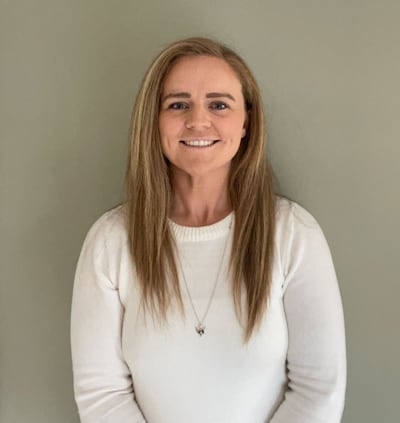With inflation moderating and heading towards policymakers’ target levels, we are finally beginning to see signs of a sustained if gradual fall in interest rates. This should make life somewhat easier for people seeking to preserve and grow the value of their hard-earned cash. It is now possible to beat inflation with some fixed-income investments while the equity markets, despite several quite precipitous dips, have been delivering strong returns.
It’s not all plain sailing though. Investments, no matter how sound they might appear, do not come with guaranteed returns and people still need to decide just how much risk they are willing to take with their money. Investors also need to assess how they might react to a sudden fall in the value of their portfolio.
“You’ve got to square all these things with investors’ time horizons and their willingness and ability to withstand occasional volatility,” says Ian Quigley, head of investment strategy with RBC Brewin Dolphin Ireland. “The evidence is relatively clear that equities deliver the best return of around 6 per cent over inflation over time. It may be a little less than that in future if you’re using today as the starting point.
“But there will be multiple occasions when investors’ resilience will be tested. Having a well-diversified portfolio helps on those occasions.”
READ MORE
Ultimately, however, rationality may have little bearing on how investors react to adverse market conditions. “It’s about the behavioural aspect of how people respond to these things,” says Quigley. “It goes back to when humans first emerged from the Serengeti: we are hard wired for fight or flight.”
That needs to be taken into account when people are making investment decisions, he explains: “It’s important to have the conversation at the outset on how you want to invest. For some it might be just investing in a fund and not looking at it after that. Some others might like to take a more active hand in it.
“And there are others who might want to have direct ownership of companies and not invest in a fund. In all cases you need to understand the assets you’re in and know what’s right for you.”
Bernard Walsh, director of pensions and investments with PwC Ireland, believes most investors should have a smile on their faces at the moment.

“The good news is investors have had a very strong year,” he adds. “Not all of them will have benefited to the same extent. And people need to understand what lies beneath that. Certain sectoral investors did incredibly well. Anything to do with AI, for example, did well.”
Walsh makes the point that investors with portfolios weighted towards technology stocks generally, and the so-called Magnificent Seven of Apple, Microsoft, Google parent Alphabet, Amazon, Nvidia, Meta Platforms, and Tesla in particular, will have done extremely well, but those who were passively invested in a broad global portfolio may not have experienced such strong returns.
“But they’ll still have done well,” Walsh adds.
That said, investors need to be prepared for periods of volatility. “The rules haven’t changed,” says Walsh. “We saw a test of those rules recently when there was a big sell-off of tech stocks. Some clients got a bit jittery but we didn’t see a panic reaction. People stuck to their guns and the markets recovered very quickly.”
Quigley points out that sharp rises and falls in stock prices tend not to be sustained: “Asset prices are probably about right and that’s true most of the time. Warren Buffett has said that asset prices spend most of their time in the zone of reasonableness, neither too cheap nor too expensive.”
Of course, equities are by no means the only game in town. “Fixed-income investments and bonds can give adequate returns at the moment,” says Quigley. “They can probably give slightly better than inflation after a decade of deeply negative returns.”
Walsh agrees. “There are still some decent deposit rates out there,” he notes. “But rates will come down. If you see an opportunity to lock in a decent rate for one, two or three years for the portion of your money that you want to protect, it is probably worth taking.”

A pension plan remains one the best investments anyone can ever make, according to Ashling O’Neill, a certified financial planner with Clear Financial.
“The tax advantages are very significant,” she says. “Not only do pension investors get tax relief on their contributions, they also enjoy tax-free growth in their pension fund. Compound growth tax free over the long term is very powerful.
“And if they are members of an occupational scheme, they also get the benefit of tax-free employer contributions. That makes pension savings very attractive.”
Indeed, the maths are compelling. Pension savings of €10,000 in a year will only cost a self-employed individual a net €6,000 if they are paying tax at the higher rate. Even in a flat year for investment returns, they would still be well ahead.
Stephen D’Arcy, director of wealth management at WTW, emphasises the importance of professional advice.
“The news cycle would scare the life out of anyone,” he says. “It would make you think there is no good time to invest. Irish people have €155 billion on deposit at very low rates. The news cycle is definitely an issue there as it can make people fearful.

“In general, the key is to work with a trusted adviser who can show you the data and help you base your decisions on that. A good financial planner, rather than selling you something, will look at your specific needs.
“Sometimes putting money on deposit might be the right answer, depending on the time horizon involved. Paying off high-interest debts on credit cards and personal loans might also be part of the answer.”
Starting out on the investment journey can appear daunting and complex, says Kevin Quinn, chief investment strategist with Bank of Ireland.
“But the starting point can be far simpler and should be more about what you need to achieve. Over how long can you invest? What is the amount of money you are trying to build up? How much capital do you have available? How much ups and downs are you prepared to endure?
“Armed with that information and some professional advice, there are a host of investment funds and products available, ranging from low-risk/return to higher risk/return combinations. Almost all will combine a portion of the capital to equities, government and company bonds, property, cash and what are generally called alternatives including hedge funds and commodities.
[ Do I have to declare ongoing investments to Revenue?Opens in new window ]
“The riskier part of the spectrum tends to equities and property, and the higher up the risk scale one goes the greater the proportion allocated to these types of assets.”
Walsh also believes in simplicity and warns people to beware of complexity or exotic strategies promising quick returns.
“There are so many investment strategies out there adding lots of complexity,” he warns. “But over time, simplicity wins out. If you don’t really understand something, run a mile.”
Quigley concurs: “The simple approach is best. If anyone comes to you with complexity or leverage or a psychologically appealing proposition, be careful.
“As they say, a lot of investment products are sold, not bought. Investment returns are a bit like the hare and the tortoise, and you need to channel your inner tortoise.”















